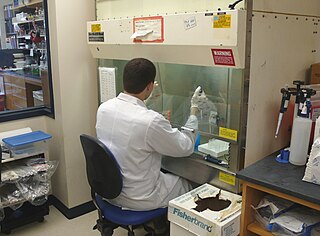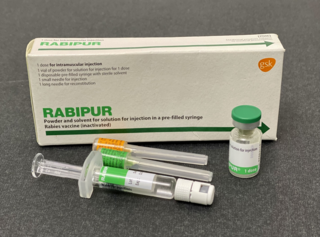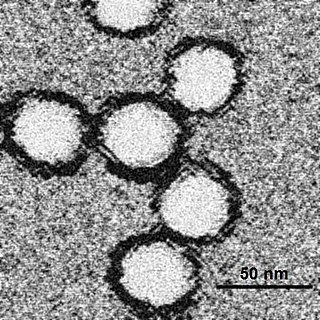 W
WAnimal vaccination is the immunisation of a domestic, livestock or wild animal. The practice is connected to veterinary medicine. The first animal vaccine invented was for chicken cholera in 1879 by Louis Pasteur. The production of such vaccines encounter issues in relation to the economic difficulties of individuals, the government and companies. Regulation of animal vaccinations is less compared to the regulations of human vaccinations. Vaccines are categorised into conventional and next generation vaccines. Animal vaccines have been found to be the most cost effective and sustainable methods of controlling infectious veterinary diseases. In 2017, the veterinary vaccine industry was valued at USD$7 billion and it is predicted to reach USD$9 billion in 2024.
 W
WVaccines against the livestock and human disease anthrax—caused by the bacterium Bacillus anthracis—have had a prominent place in the history of medicine, from Pasteur’s pioneering 19th-century work with cattle to the controversial late 20th century use of a modern product to protect American troops against the use of anthrax in biological warfare. Human anthrax vaccines were developed by the Soviet Union in the late 1930s and in the US and UK in the 1950s. The current vaccine approved by the U.S. Food and Drug Administration (FDA) was formulated in the 1960s.
 W
WVaccinations for cattle involves the process of applying subcutaneous injections of biological microorganisms in a weakened state to help the immune system develop protection by providing active acquirement of immunity to a particular disease. Cattle are bovine livestock and are thus very susceptible to diseases. Vaccinations for cattle are widely used in the livestock industries of the Australian agriculture sector by farmers to prevent harmful and deadly diseases from infecting their livestock, avoiding any economical or biological harm. Farmed livestock industries account for 45% of the gross value of Australian agricultural output, beef cattle being the largest farmed livestock nationally with around 26.2 million head of cattle nationwide. The beef industry within Australia generates a gross value of approximately $8 billion AUD in beef exports and a total gross value of $11.4 billion in farm production (2017–18). Thus, vaccinations play a vital role in protecting, sustaining and growing the beef cattle industry in the Australian agriculture sector.
 W
WEquine influenza is the disease caused by strains of influenza A that are enzootic in horse species. Equine influenza occurs globally, previously caused by two main strains of virus: equine-1 (H7N7) and equine-2 (H3N8). The OIE now considers H7N7 strains likely to be extinct since these strains have not been isolated for over 20 years. Predominant international circulating H3N8 strains are Florida sublineage of the American lineage; clade 1 predominates in the Americas and clade 2 in Europe.. The disease has a nearly 100% infection rate in an unvaccinated horse population with no prior exposure to the virus.
 W
WA Leishmaniasis vaccine is a vaccine which would prevent leishmaniasis. As of 2017, no vaccine for humans was available. Currently some effective leishmaniasis vaccines for dogs exist.
 W
WThe rabies vaccine is a vaccine used to prevent rabies. There are a number of rabies vaccines available that are both safe and effective. They can be used to prevent rabies before, and for a period of time after, exposure to the rabies virus, which is commonly caused by a dog bite or a bat bite.
 W
WWest Nile fever is an infection by the West Nile virus, which is typically spread by mosquitoes. In about 80% of infections people have few or no symptoms. About 20% of people develop a fever, headache, vomiting, or a rash. In less than 1% of people, encephalitis or meningitis occurs, with associated neck stiffness, confusion, or seizures. Recovery may take weeks to months. The risk of death among those in whom the nervous system is affected is about 10 percent.